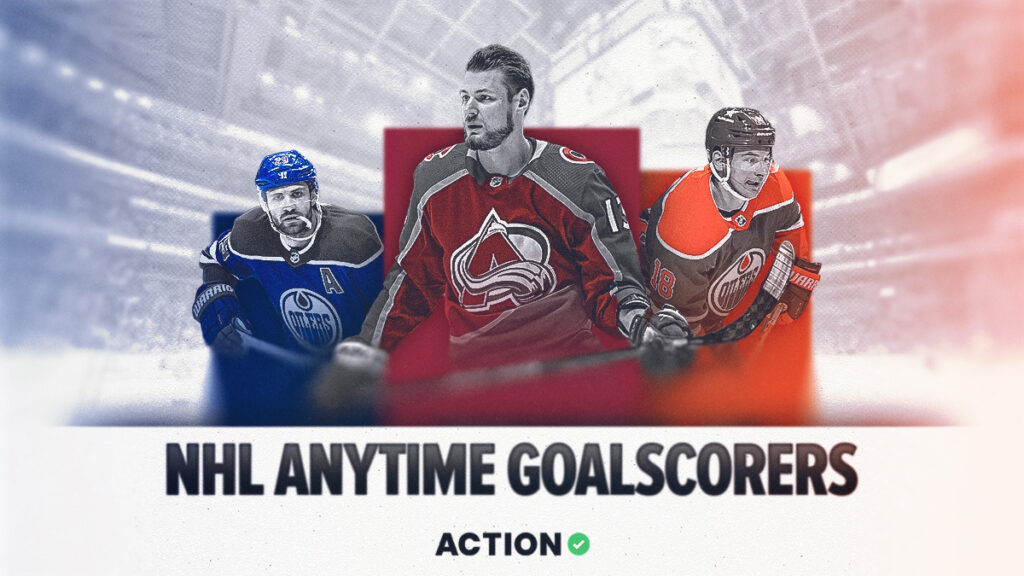The NHL season brings hundreds of matches, unpredictable results, and countless betting angles. Among them, player props have become one of the most engaging ways to follow hockey. Instead of backing a team to win, these bets focus on specific players and their performance — goals, assists, points, or shots on goal.
Player props reward attention to detail. Understanding ice time, power-play usage, opponent quality, and current form can help bettors identify where bookmakers may have mispriced a market. It’s less about luck and more about knowing which players have the best chance to influence a game on any given night.
Anytime Goalscorer Props
Anytime goalscorer props are the most followed player markets in hockey betting. The idea is simple — wager on a player to score a goal at any time during the match. Elite forwards such as Auston Matthews often trade around 2.50-3.00, Alex Ovechkin around 3.00-3.50, and Connor McDavid roughly 2.80-3.20.

Lower-profile players might be available at longer odds, typically 8.00-12.00, offering high potential returns but much lower probabilities. Elite shooters convert roughly 15-18% of their shots into goals, while middle-six forwards usually fall in the 8-12% range. That gap reflects the difference in both opportunity and finishing ability.
When assessing anytime goalscorer props, several points help identify value:
- Power-play deployment: Top-unit skaters see higher shot volume and better scoring positions.
- Match-up quality: Facing a team with weak defensive structure or poor penalty-killing efficiency increases goal probability.
- Shot volume and location: A player averaging 4–5 shots per game with high-danger chances carries stronger underlying metrics than someone relying on deflections or rebounds.
- Line combinations: Playing alongside creative playmakers naturally boosts scoring opportunities.
An edge appears when a bookmaker undervalues these factors — for instance, if a player has moved onto the top line or regained top-unit power-play duties but the market has not yet reacted.
Points Props (Over/Under)
Points props focus on total points (goals + assists) that a player records in a single game. Lines for stars such as McDavid or Nikita Kucherov often sit around 1.5 points, priced near even money (-110/-110). These bets reward players who create offence, not just those who finish it.
Top-line forwards and offensive defencemen who log heavy minutes and play on the first power-play unit are natural candidates. Roughly a quarter of many teams’ goals come on the man advantage, so power-play specialists carry higher upside.
When evaluating this market, matchup analysis is essential. Facing a team with a weak defence or tired goaltender can make the “over” far more realistic. Conversely, playing away to a defensively sound opponent might make the “under” more appealing.
When evaluating this type of prop, consider:
- Opponent defence: Teams allowing high expected goals against (xGA) are prime targets.
- Power-play versus penalty-kill mismatch: A strong power-play facing a weak penalty kill often leads to higher point totals.
- Game script: If a team is favoured in a high-total game, top players have more chances to hit overs.
- Home/away splits: Some players perform better at home, benefiting from favourable match-ups and last-change opportunities.
Bettors who track these variables often find value before the public catches on. Even a small shift in power-play minutes or linemates can meaningfully change a player’s expected point output.
Shots on Goal Props
Shots on goal (SOG) props measure volume rather than scoring. Bettors choose whether a player will record over or under a set number of shots on target. Typical lines range between 2.5 and 4.5, depending on position and role.
High-volume forwards average around three to four shots per game, while offensive defencemen such as Cale Makar or Quinn Hughes often post similar numbers when given freedom to roam on the power-play.
Crucially, SOG props care only about the number of shots hitting the net, not about goals scored or saves made. A goaltender’s performance has no impact unless it prevents shots from reaching target.
Factors that influence SOG outcomes include:
- Average shot attempts per 60 minutes — players with a shoot-first mindset are more reliable.
- Power-play usage — time on the man advantage inflates shot totals.
- Opponent’s shot suppression — tight-checking teams reduce volume; open, end-to-end games increase it.
When a player’s recent shot numbers exceed the bookmaker’s line, especially against a defence allowing plenty of attempts, the over can hold solid value.
Multi-Prop Strategy
Combining several props from the same game can offer better overall odds. These multi-prop or “same-game” combinations must, however, be chosen carefully to avoid negative correlation.

Example combination:
- McDavid registers over 0.5 assists
- Draisaitl scores a goal anytime
- Total match goals over 6.5
These outcomes align logically because McDavid and Draisaitl often play together on both the top line and power-play unit. If Edmonton’s offence dominates, all three legs have a chance of landing.
Positive correlation increases potential value, but stacking props without logic can destroy it. For instance, backing both goalkeepers to record shutouts in the same game makes little sense.
When constructing multi-prop bets:
- Select props that benefit from each other’s success.
- Avoid including opposing outcomes.
- Assess whether the combined odds justify the increased risk.
Used sensibly, this method can highlight matches where team chemistry and offensive potential align with the statistical outlook.
Finding Value in Player Props
Locating genuine value in player props requires timing, information, and a clear process. Markets can move slowly when line-ups or injuries change, giving sharp bettors opportunities. This is where checking multiple operators — including pricing differences often highlighted across betting sites not on GamStop — can reveal advantageous gaps before lines tighten.
Practical tips:
- Track ice time — players averaging 18+ minutes per night produce more consistent data for props.
- Watch line combinations — skating beside elite playmakers boosts goal and assist chances.
- Stay on top of team news — injuries or call-ups can open opportunities for under-priced players moving into higher roles.
- Monitor bookmaker reaction speed — odds sometimes lag after late line-up adjustments or goalie announcements.
- Compare across sportsbooks — slight differences in pricing may turn a marginal pick into a value play.
- Understand variance — even top players blank occasionally; long-term discipline matters more than short bursts.
Sharp bettors use statistics like expected goals (xG), individual shot attempts, and power-play share to verify whether a player’s prop line truly reflects current usage. If numbers and context differ, there may be hidden value before the market catches up.
Player props offer a fresh way to follow NHL action — focusing on individuals rather than team outcomes. Whether it’s a sniper’s goal, a playmaker’s assist, or a defenceman piling up shots, informed analysis of minutes, roles, and match-ups can reveal opportunities that headline odds overlook.
Understanding context and staying patient are the key advantages. Bettors who approach props with structure rather than emotion often find that, over time, precision beats guesswork.
